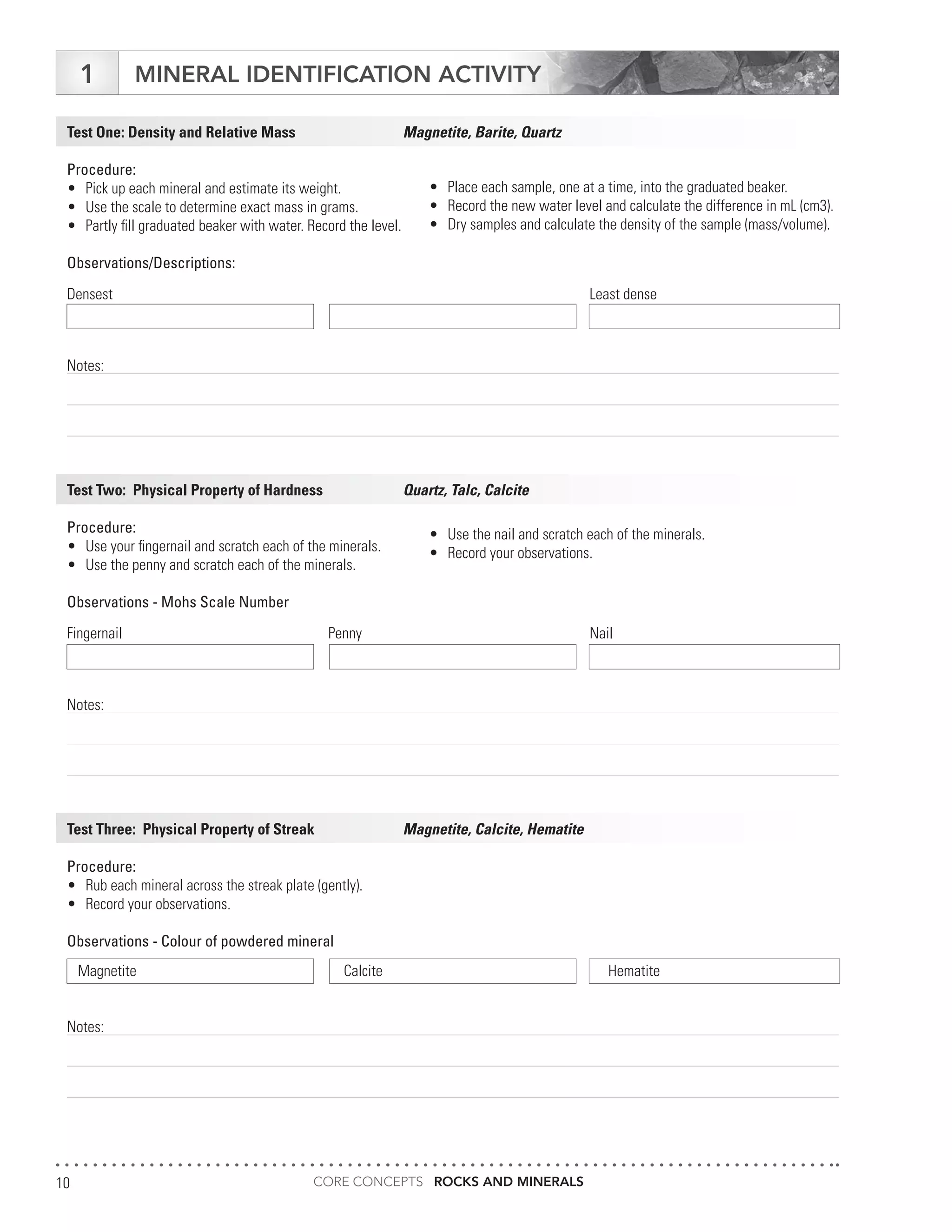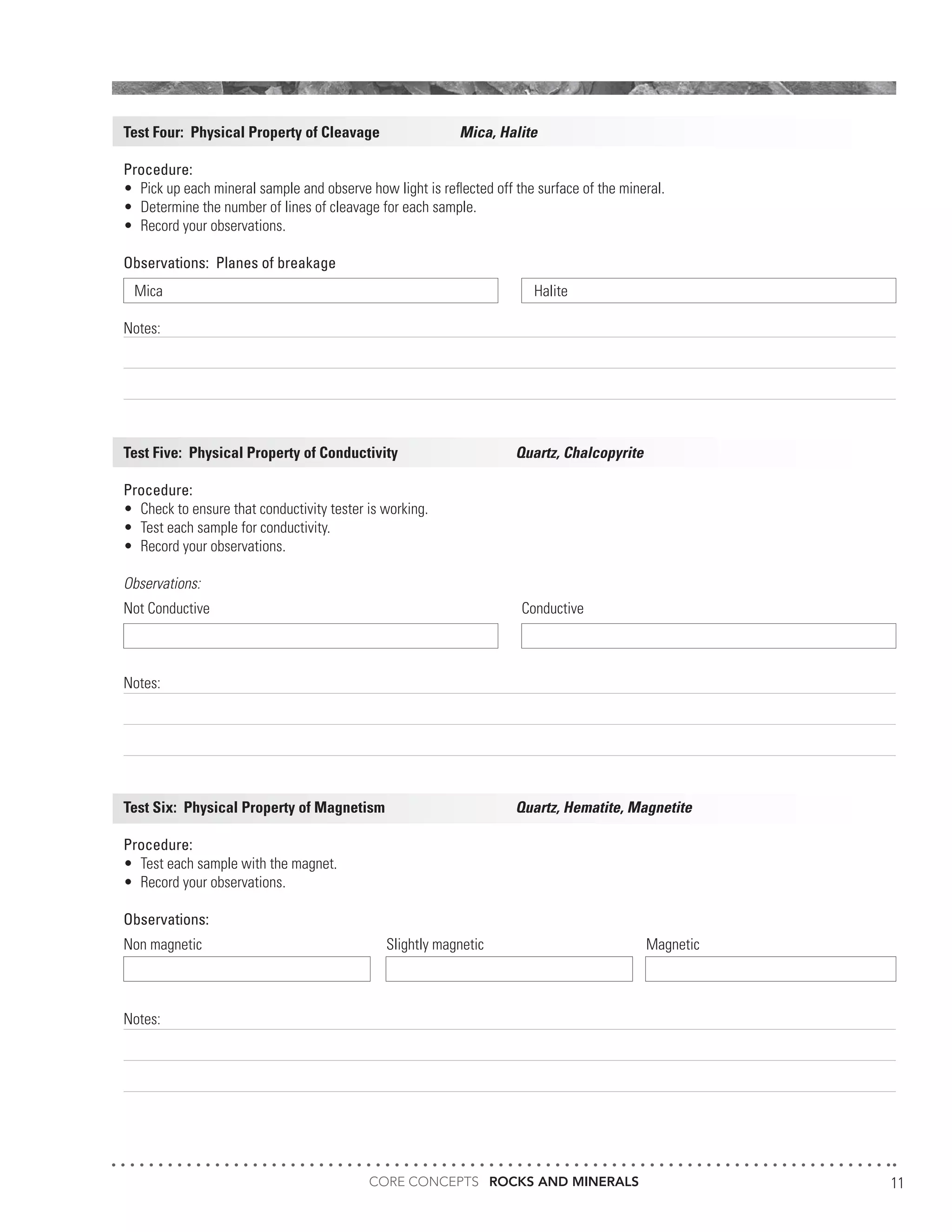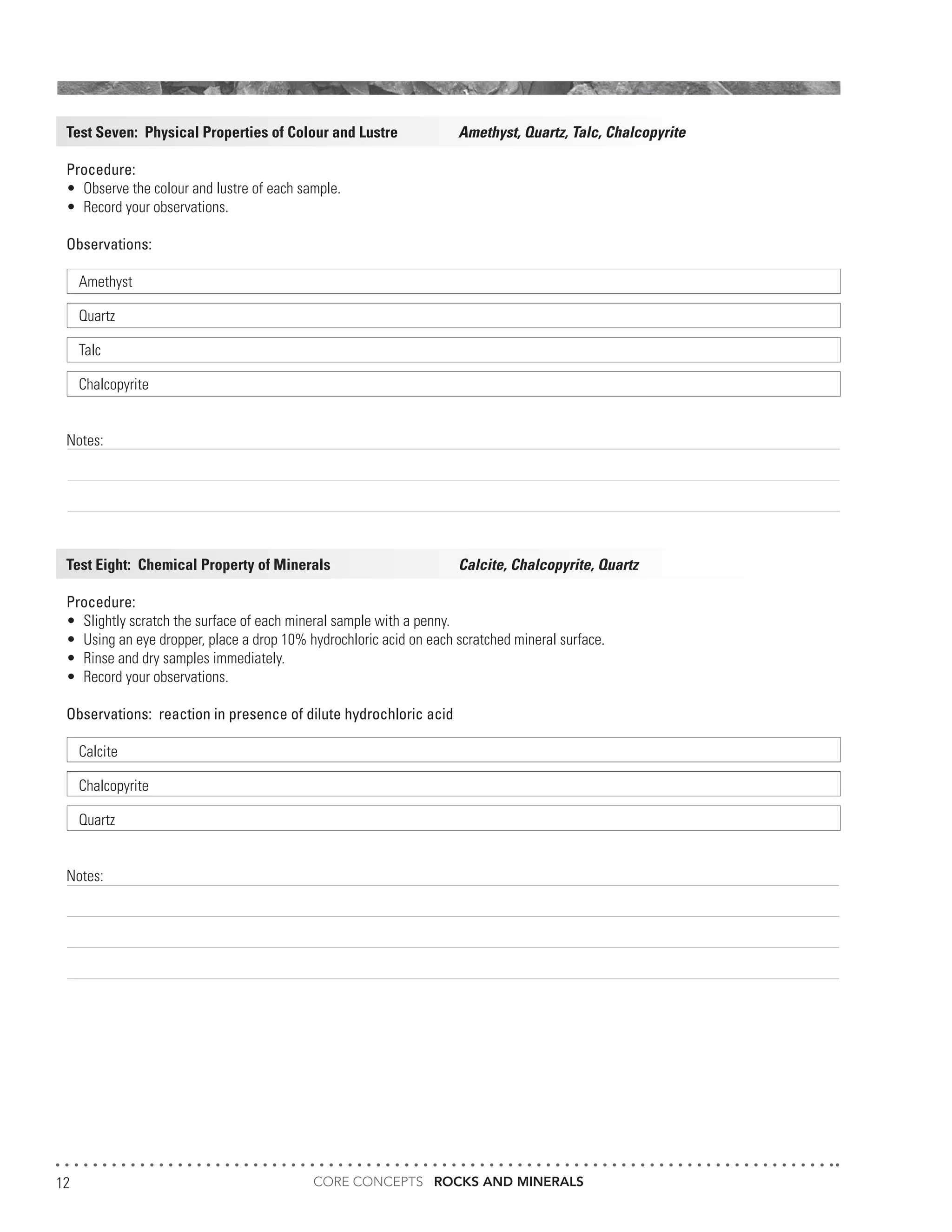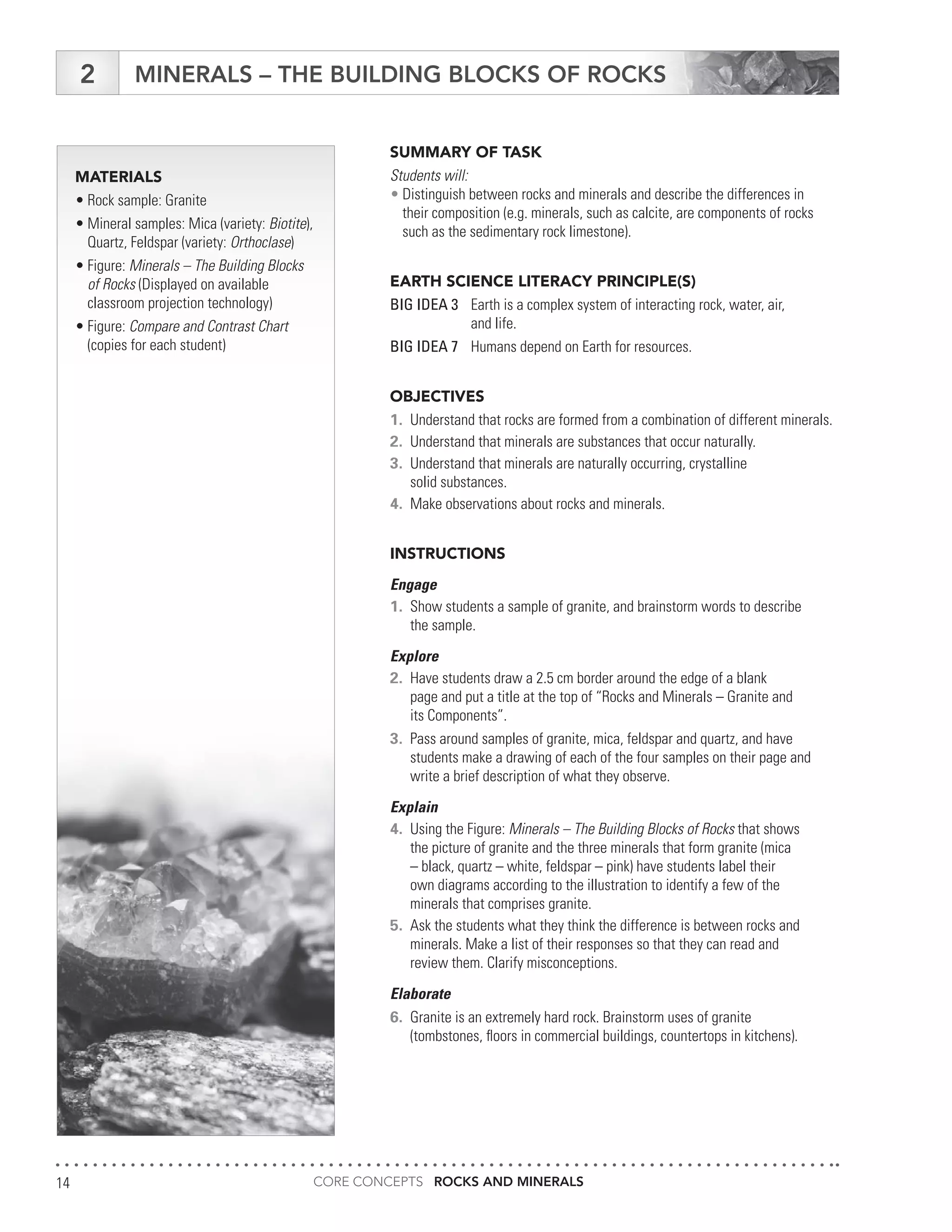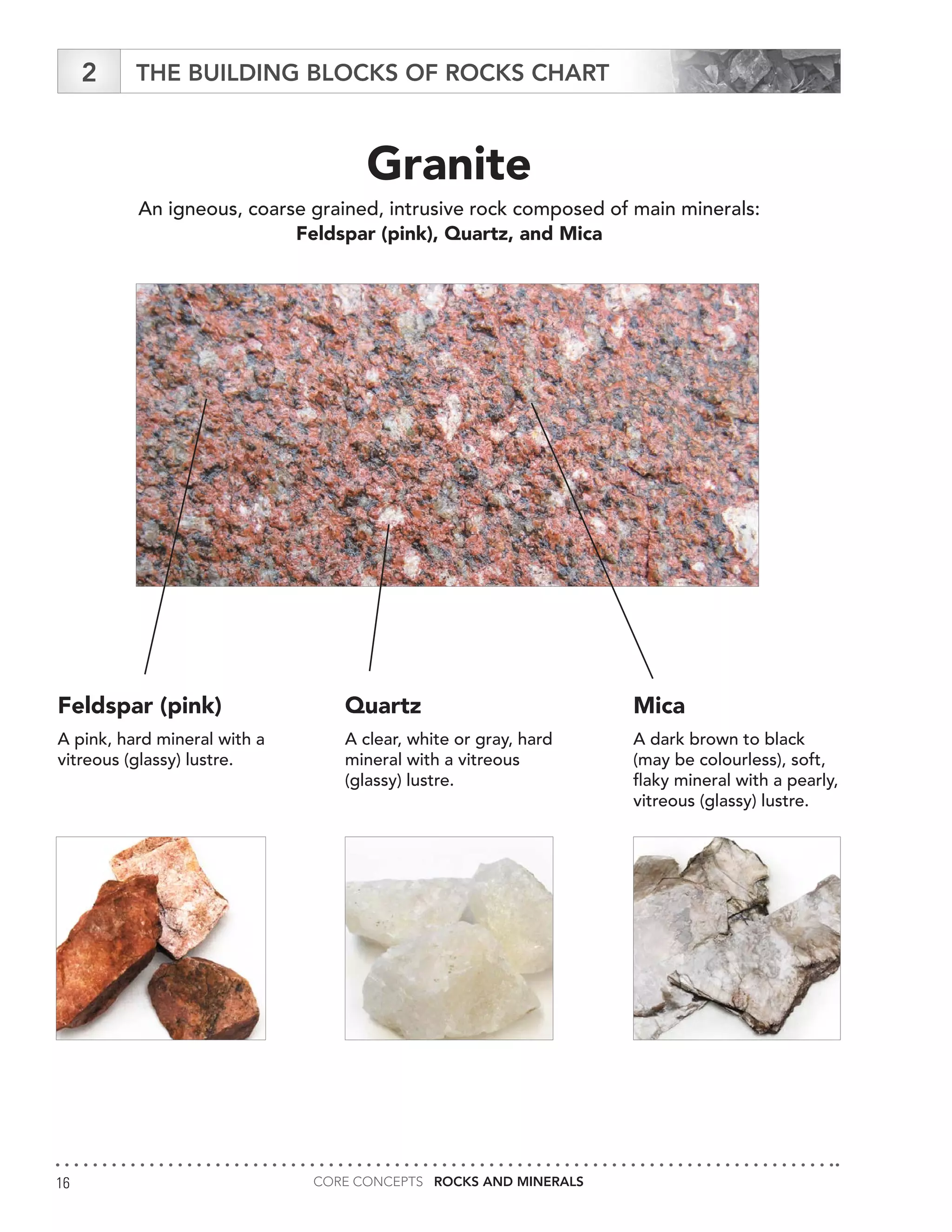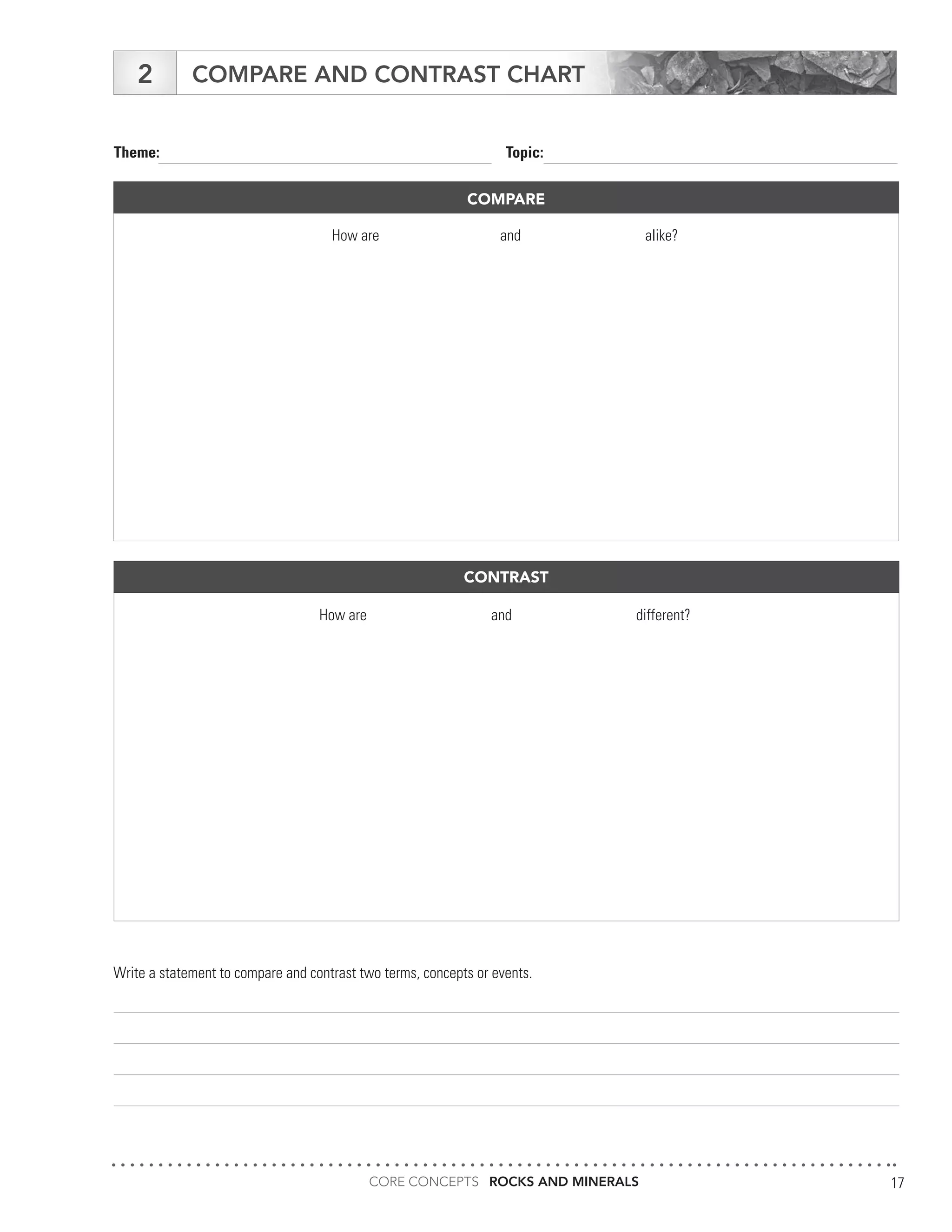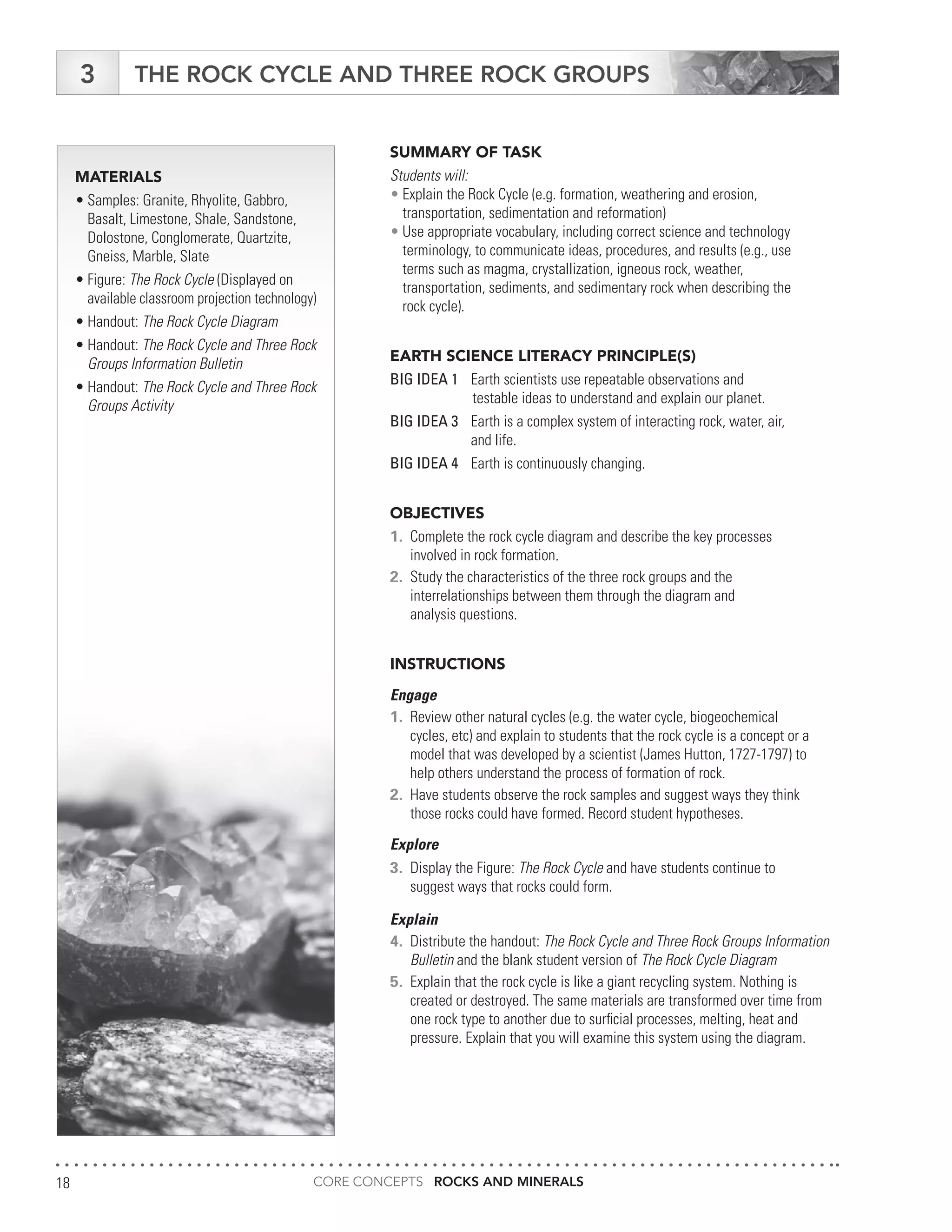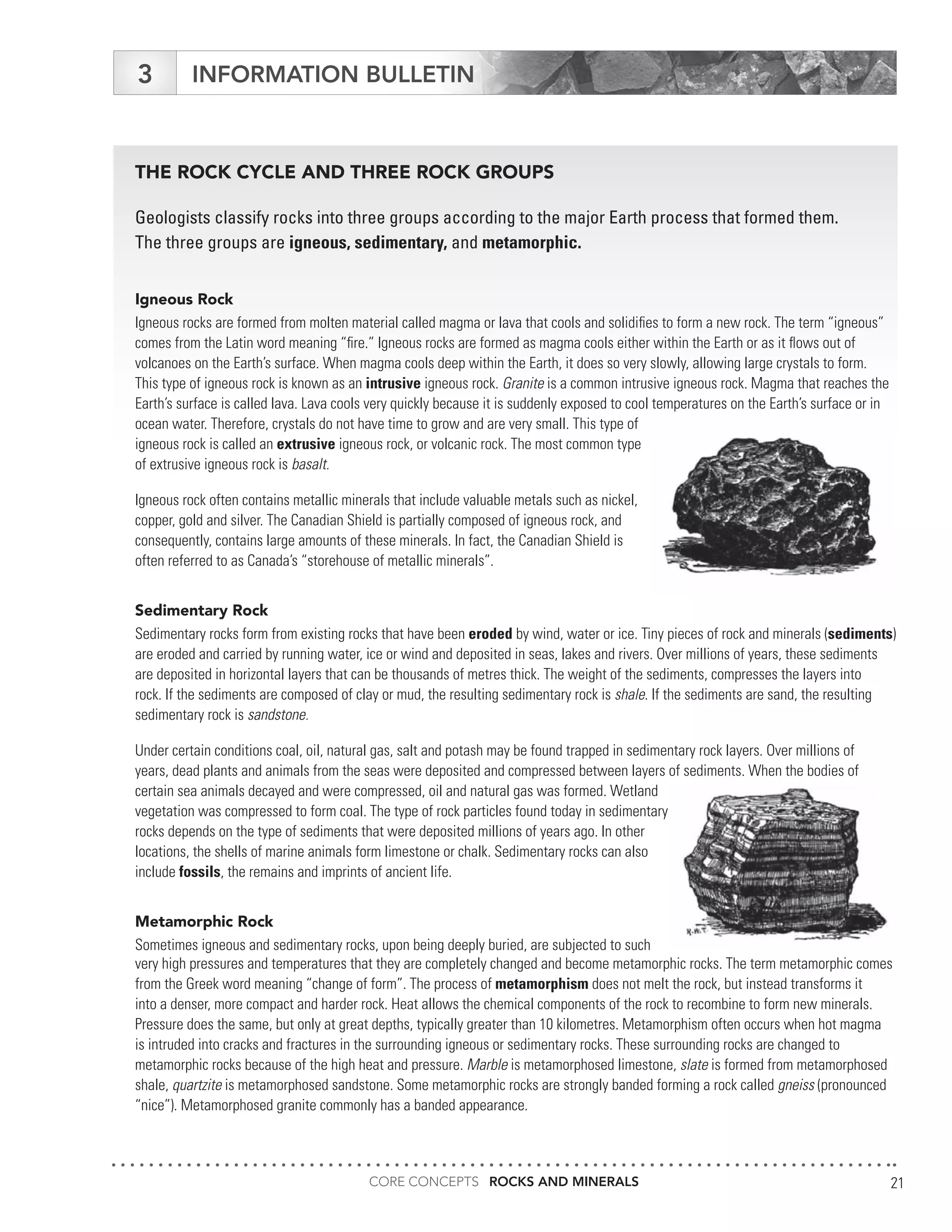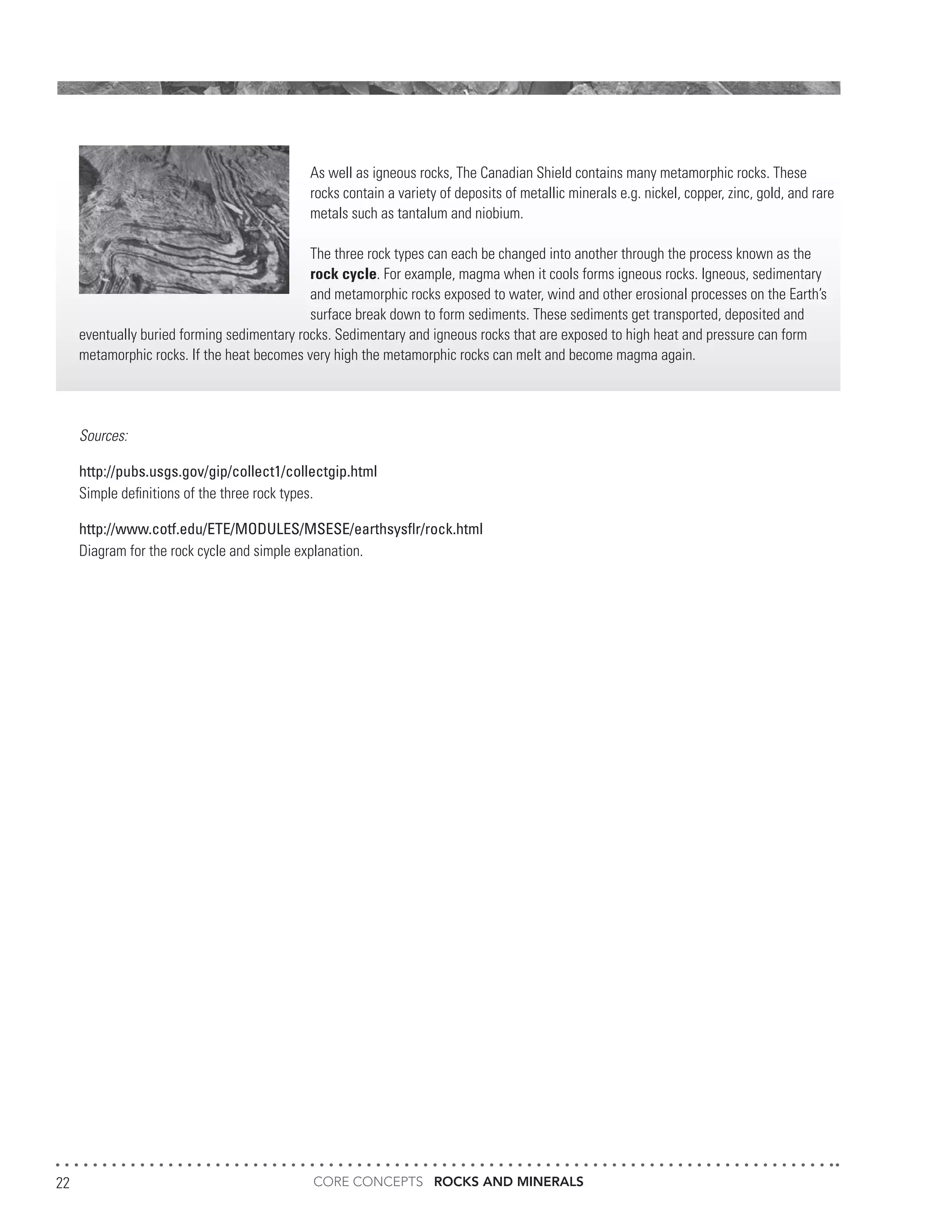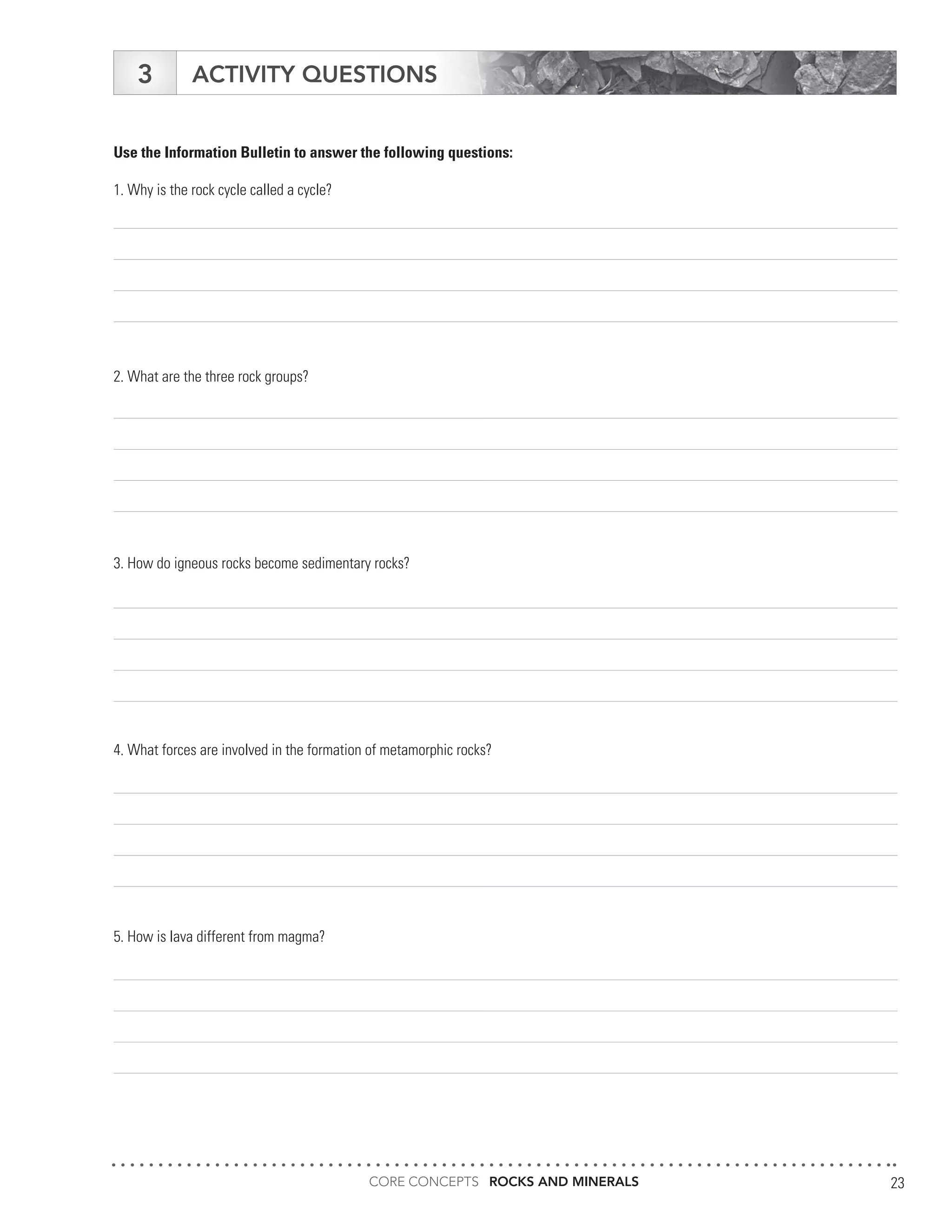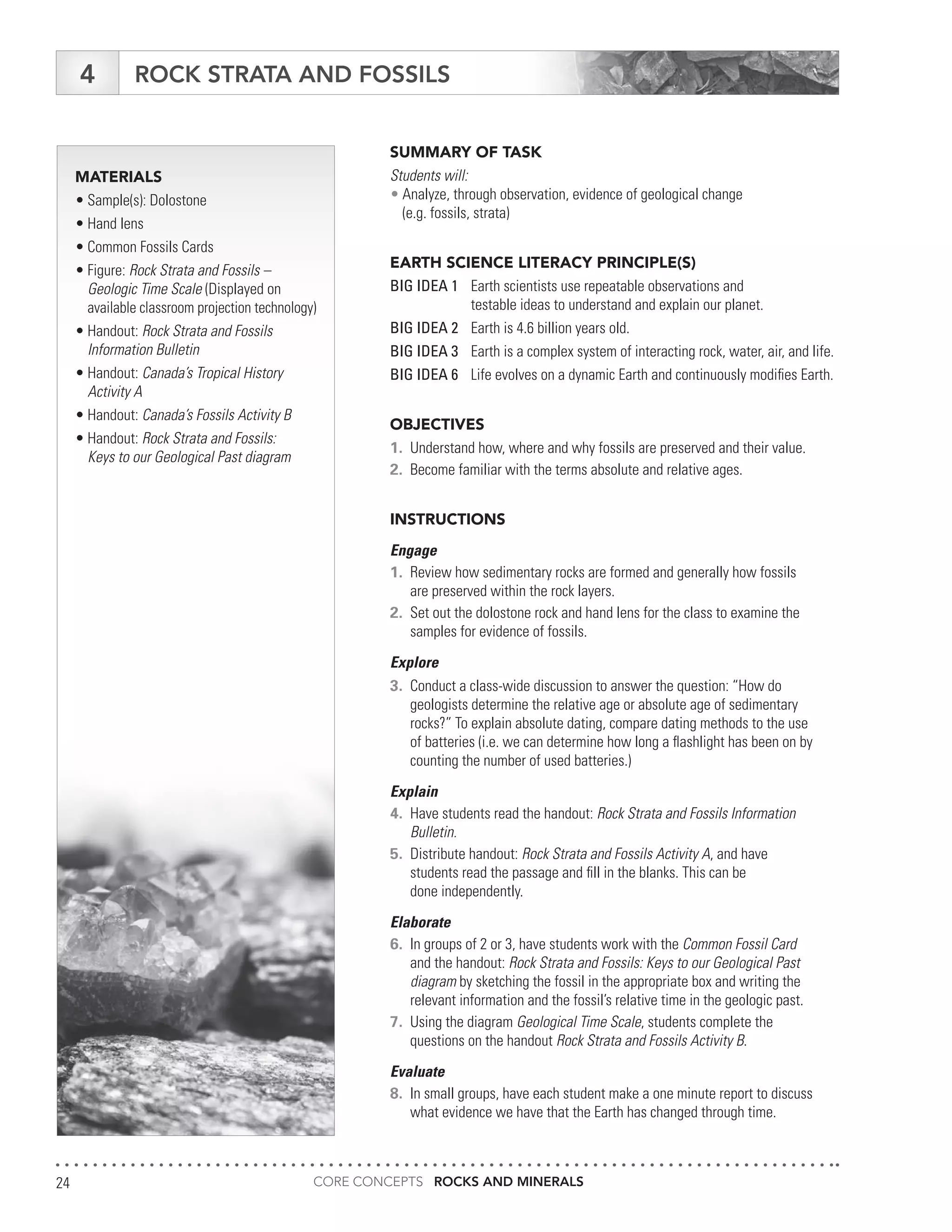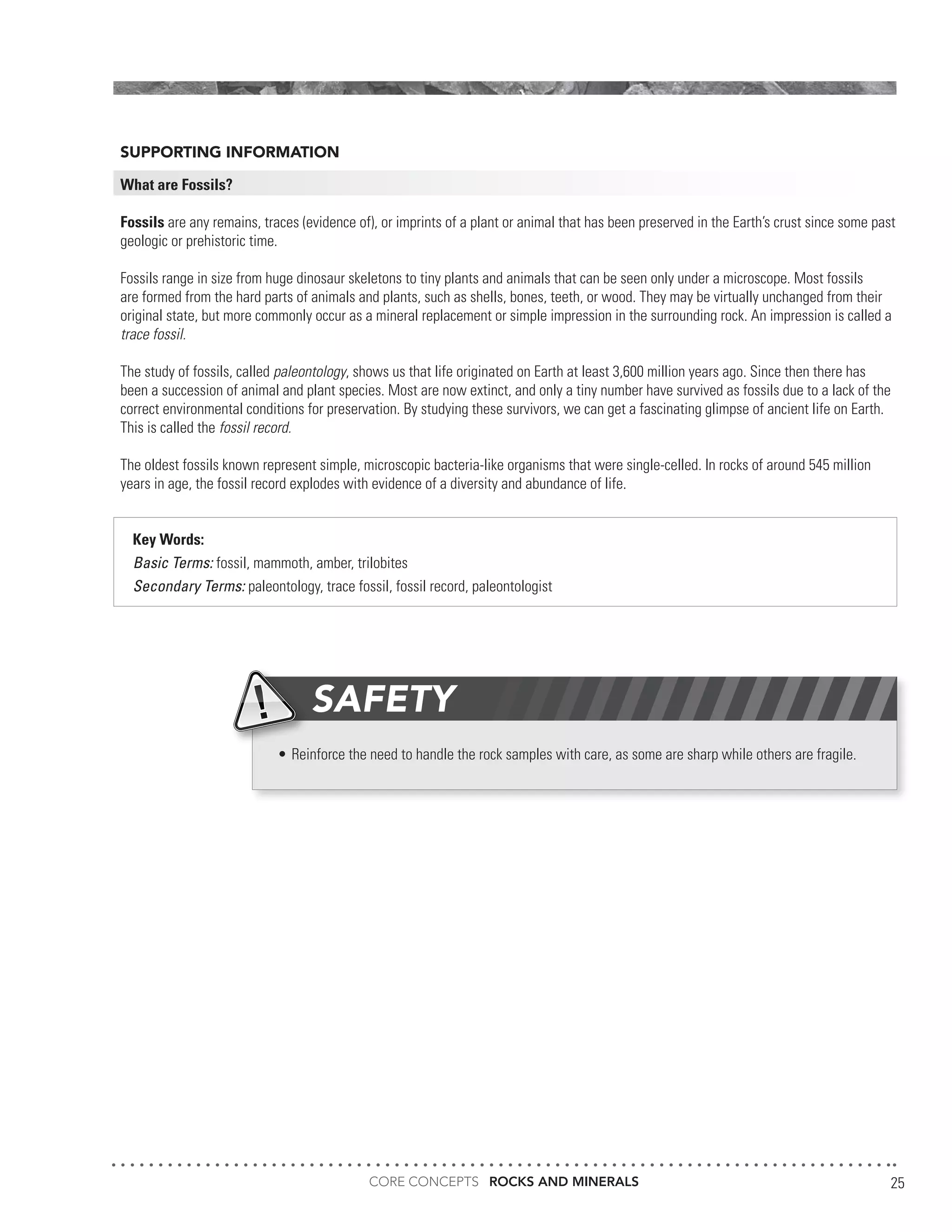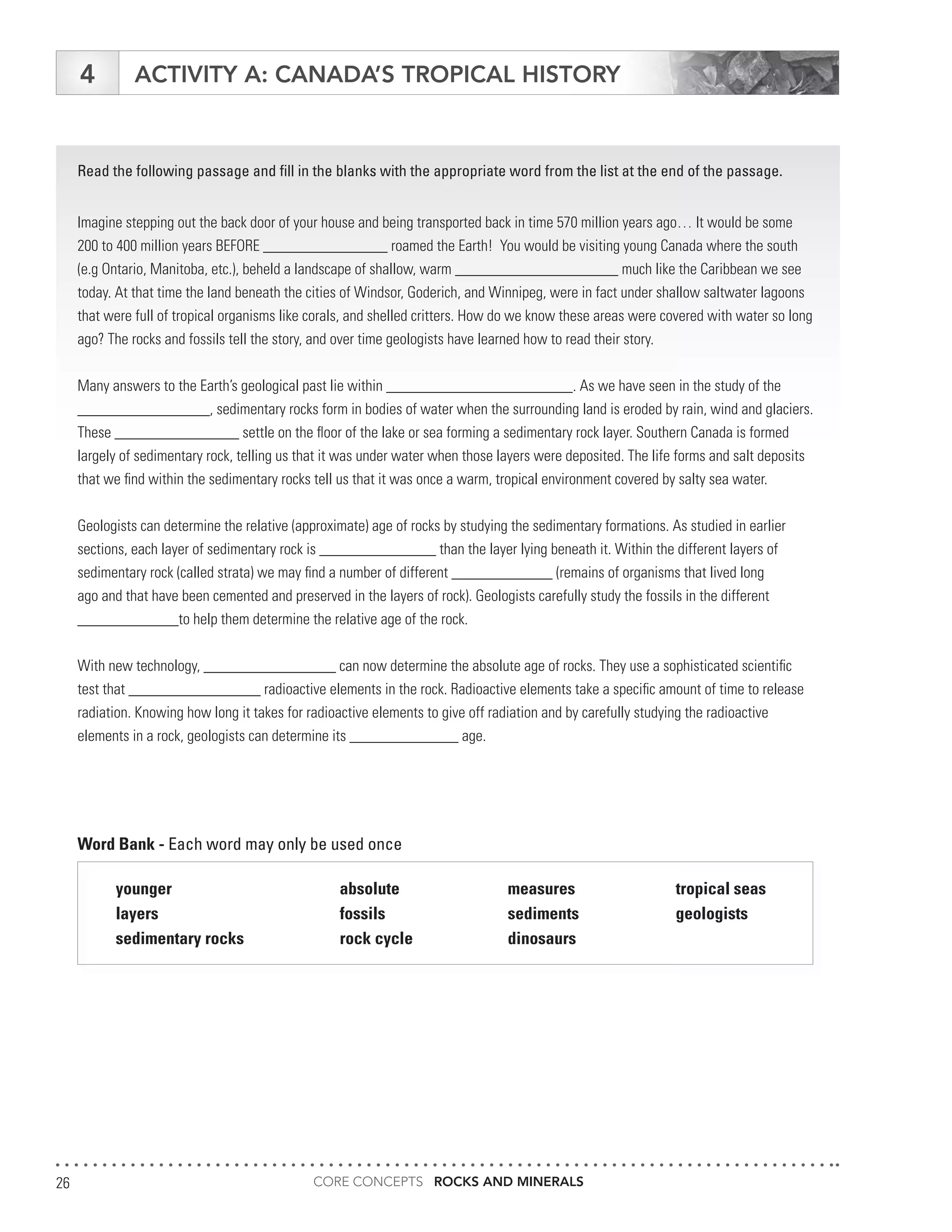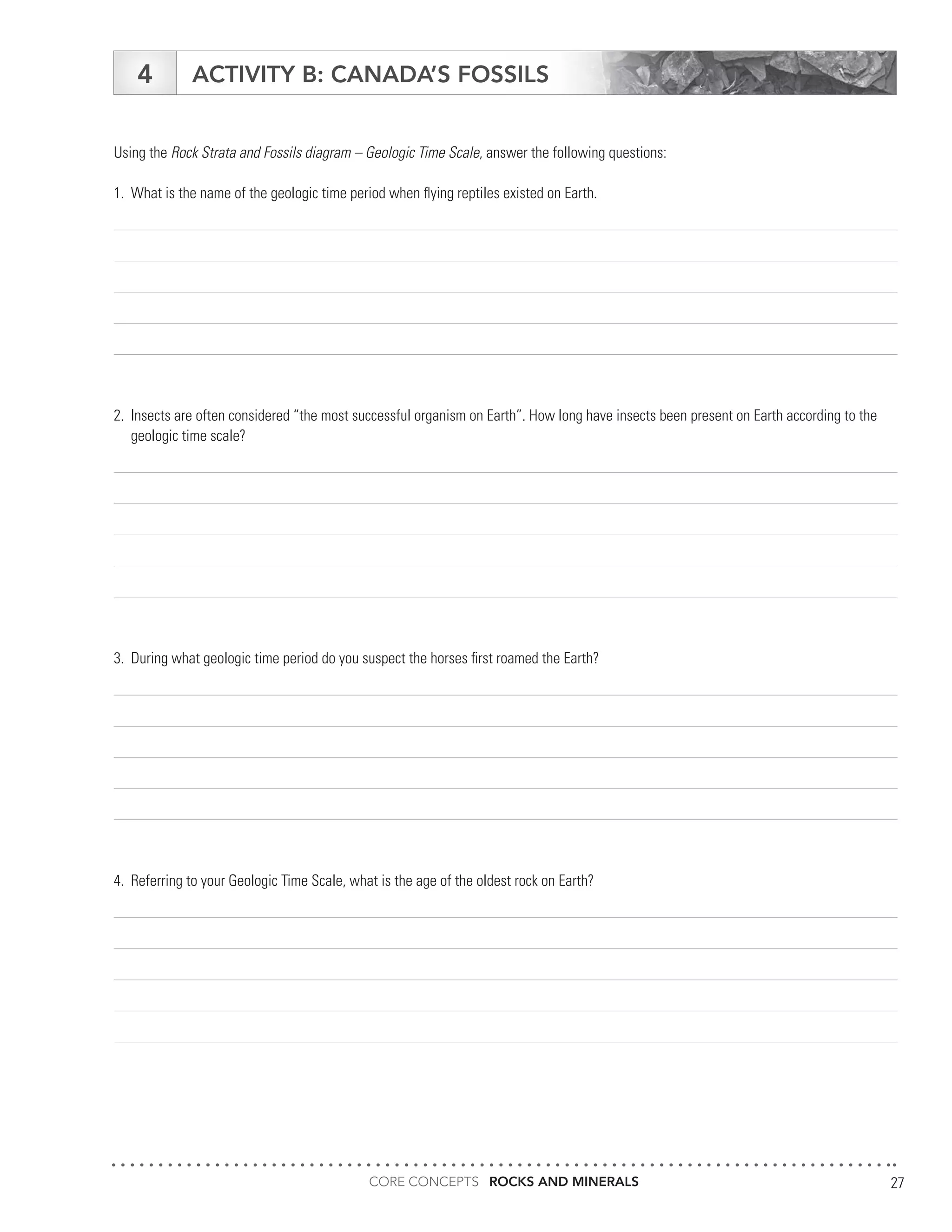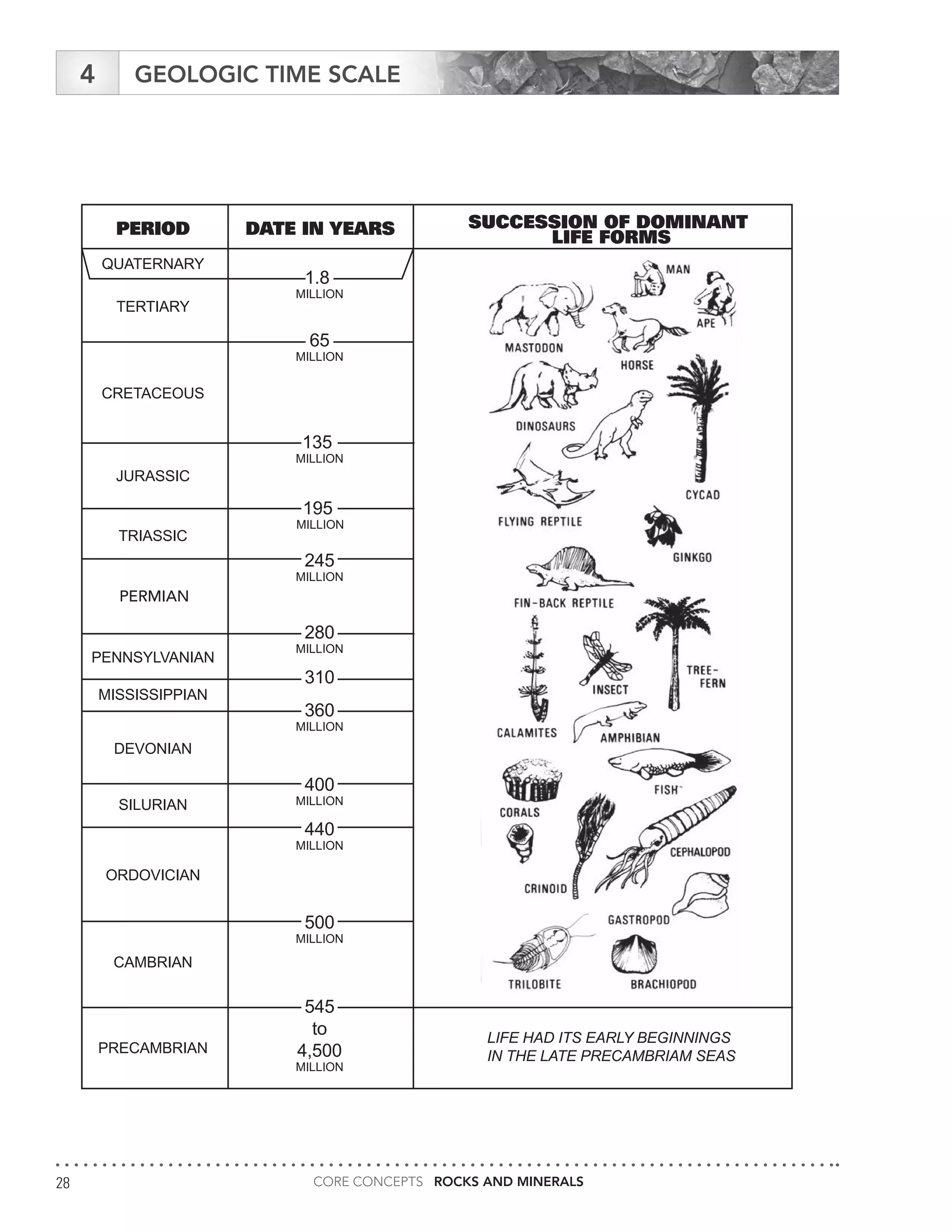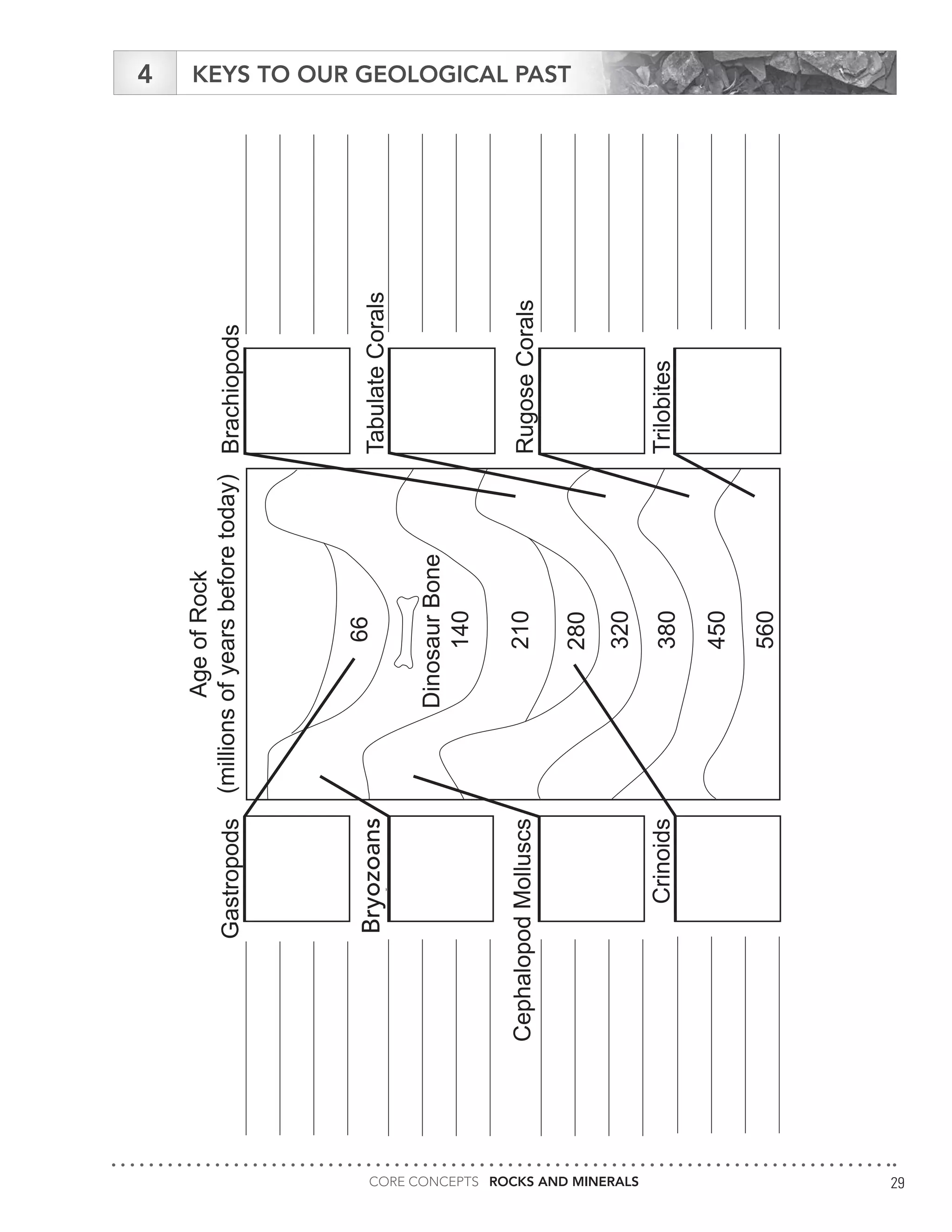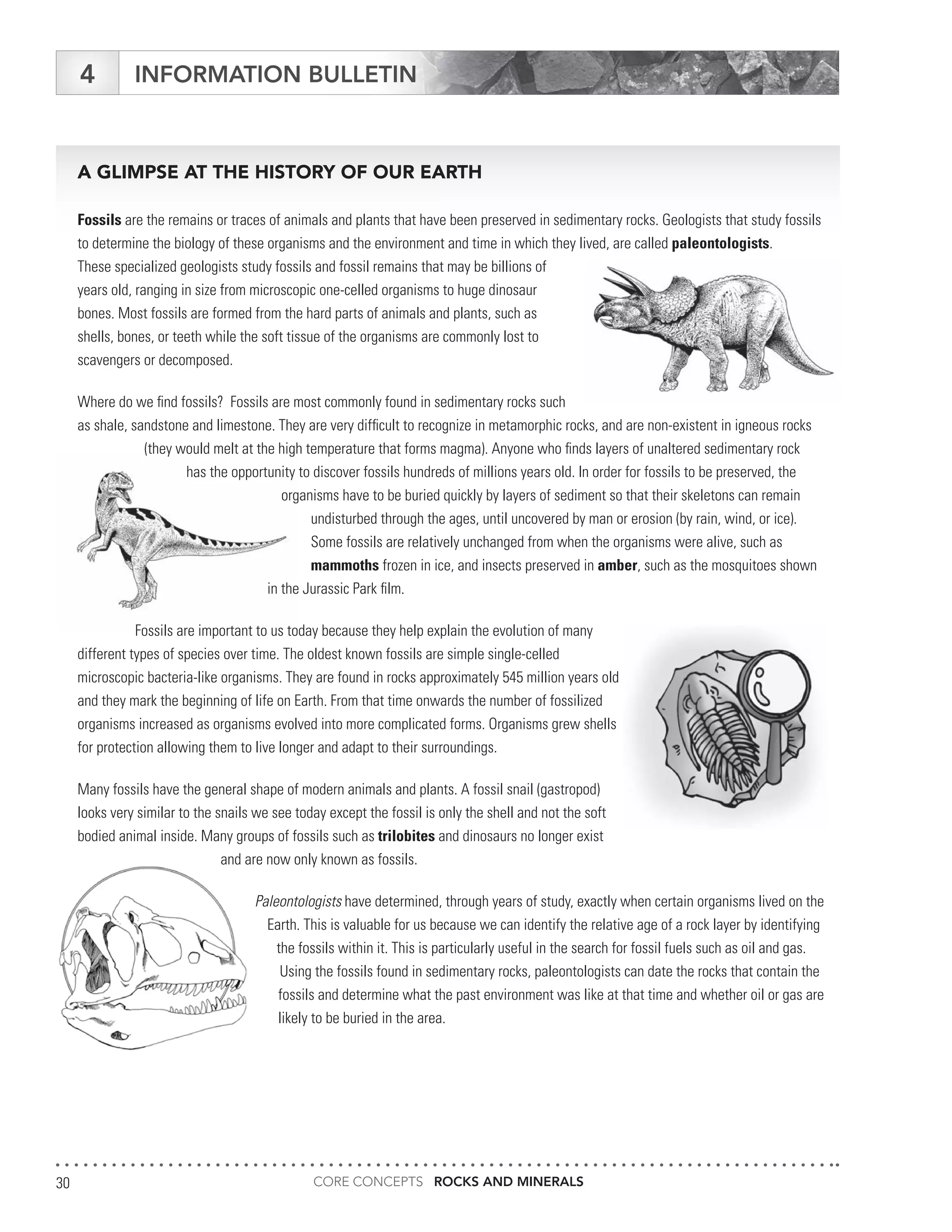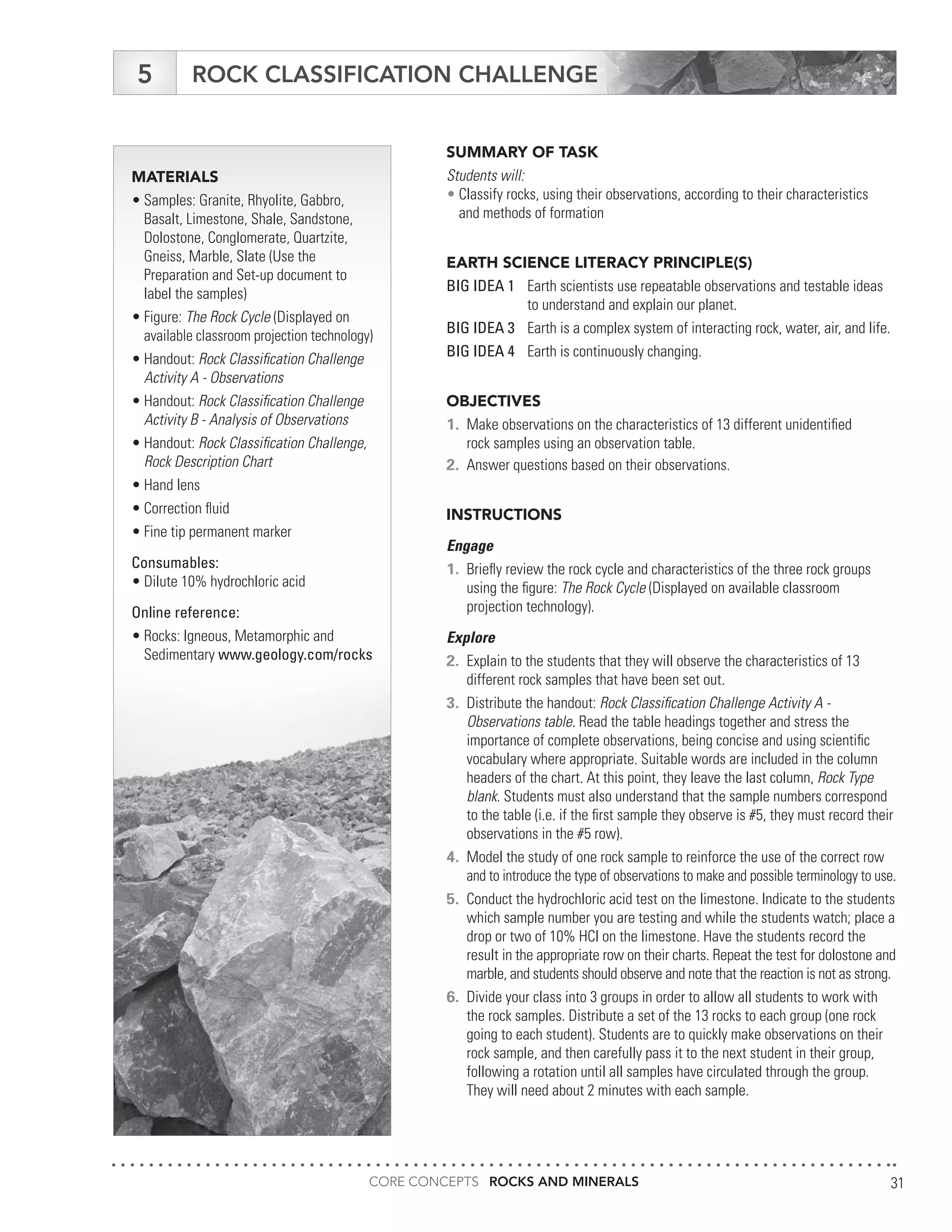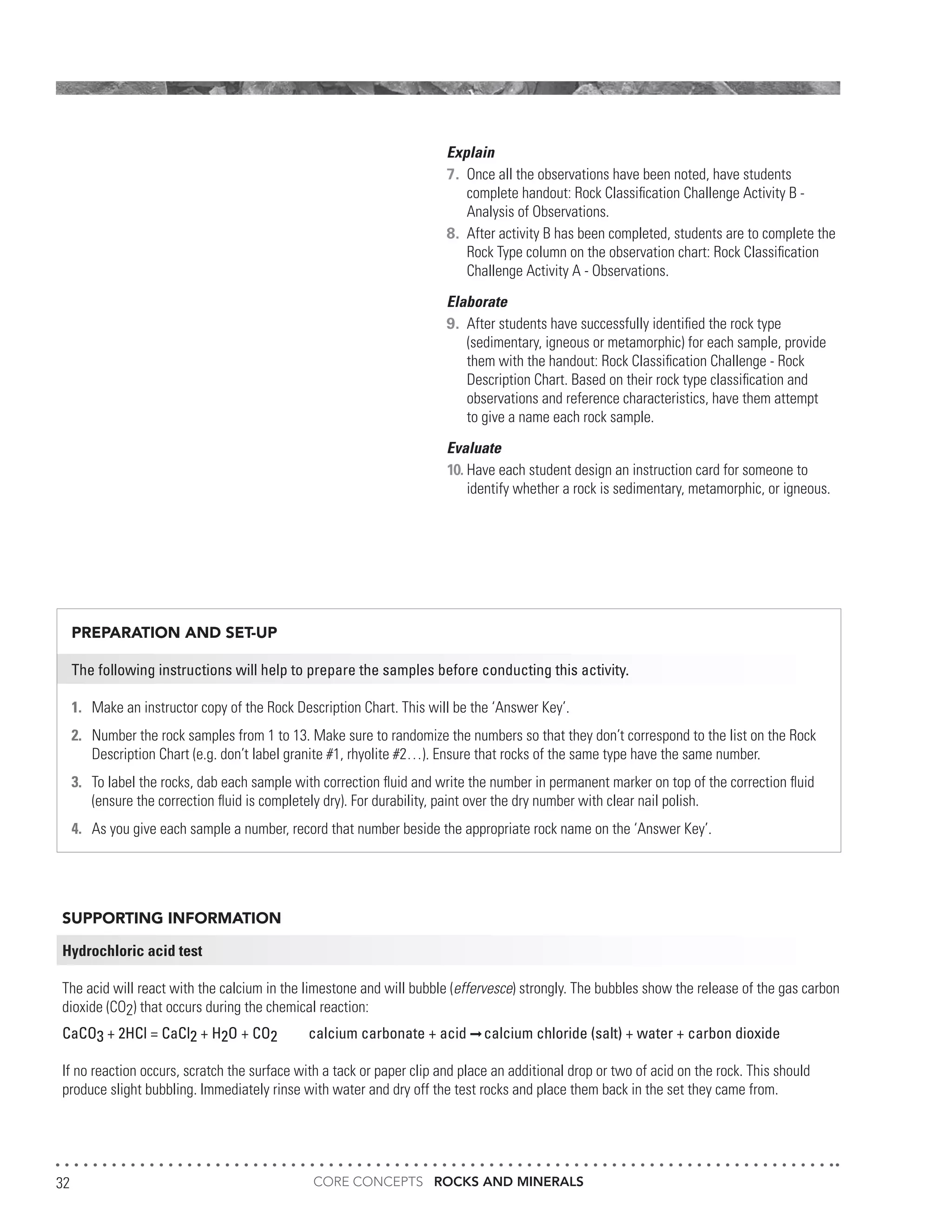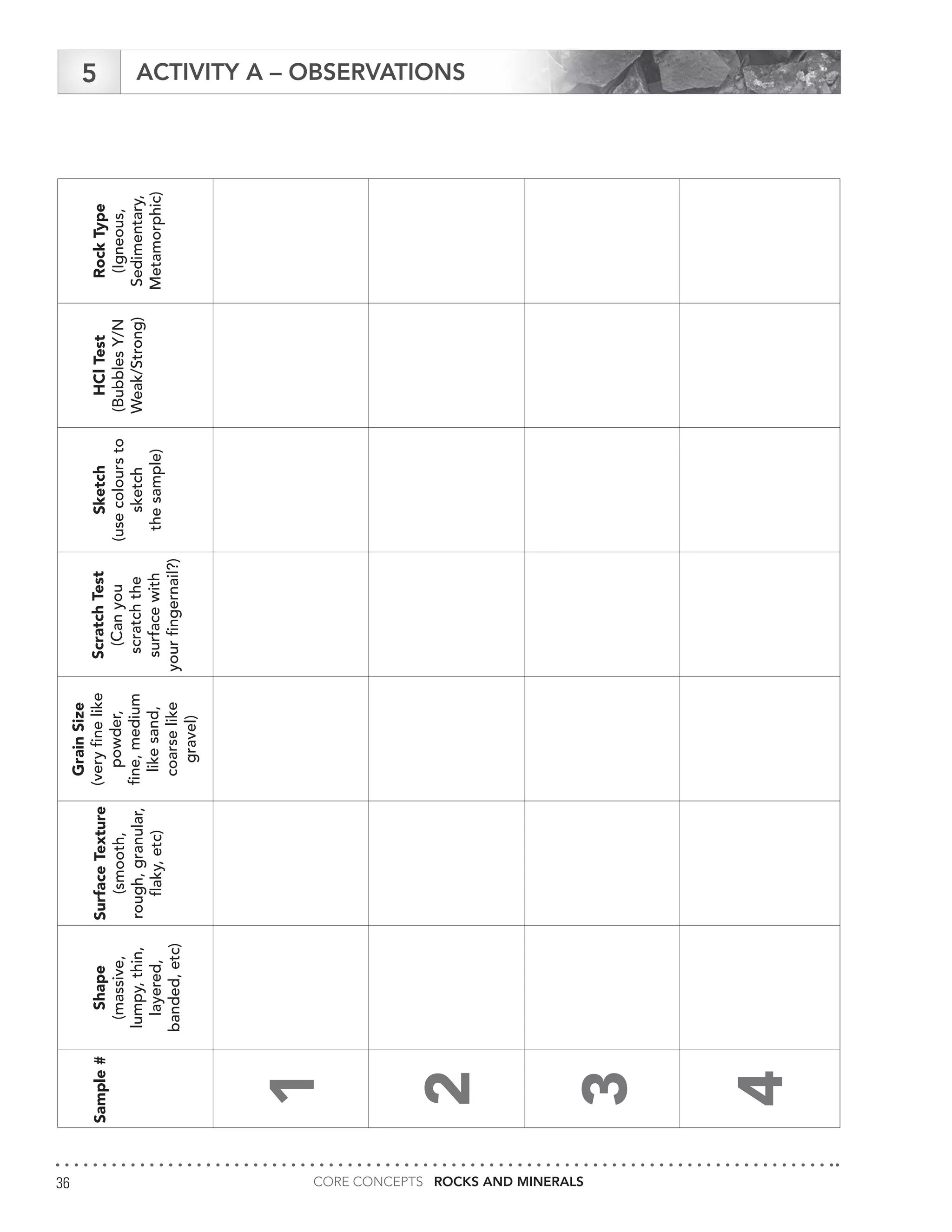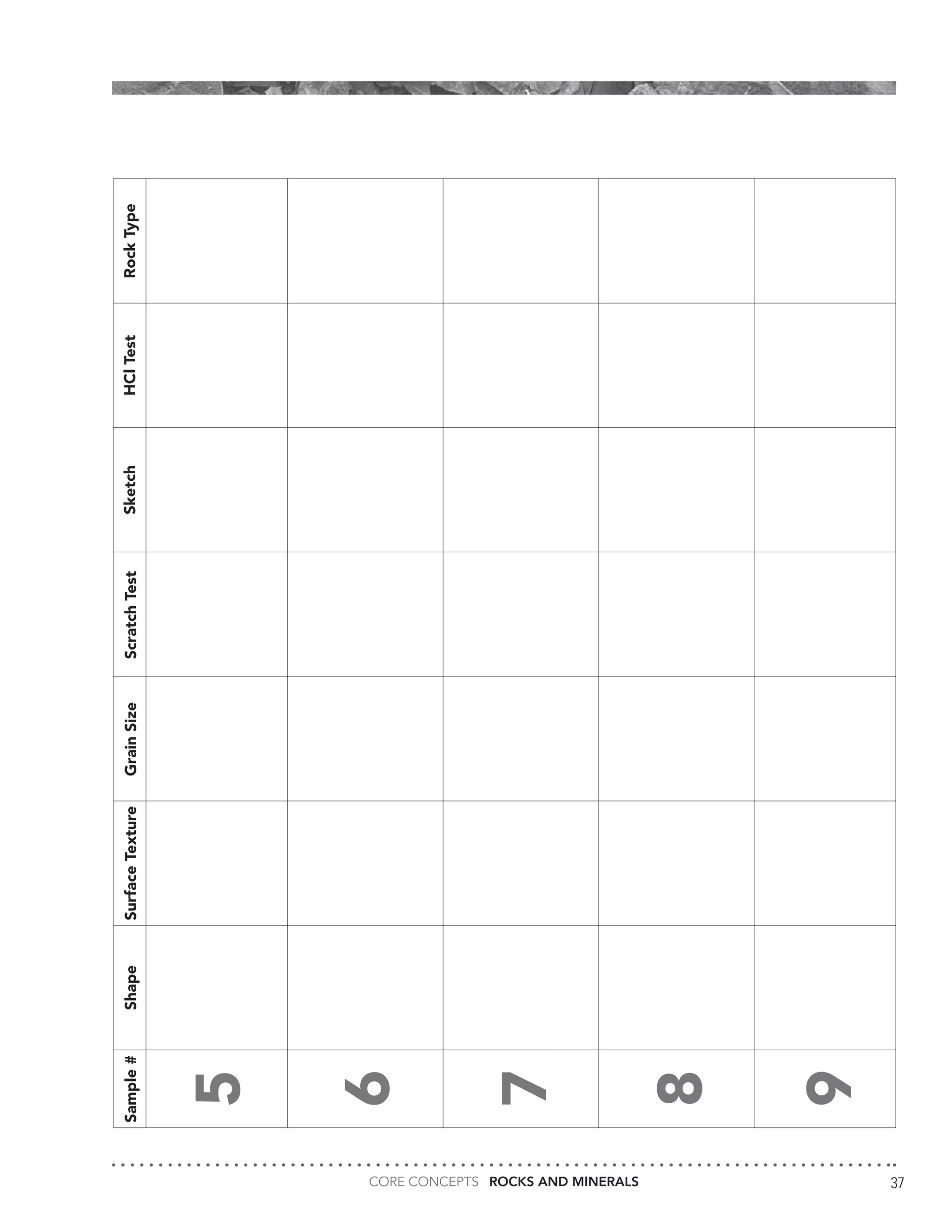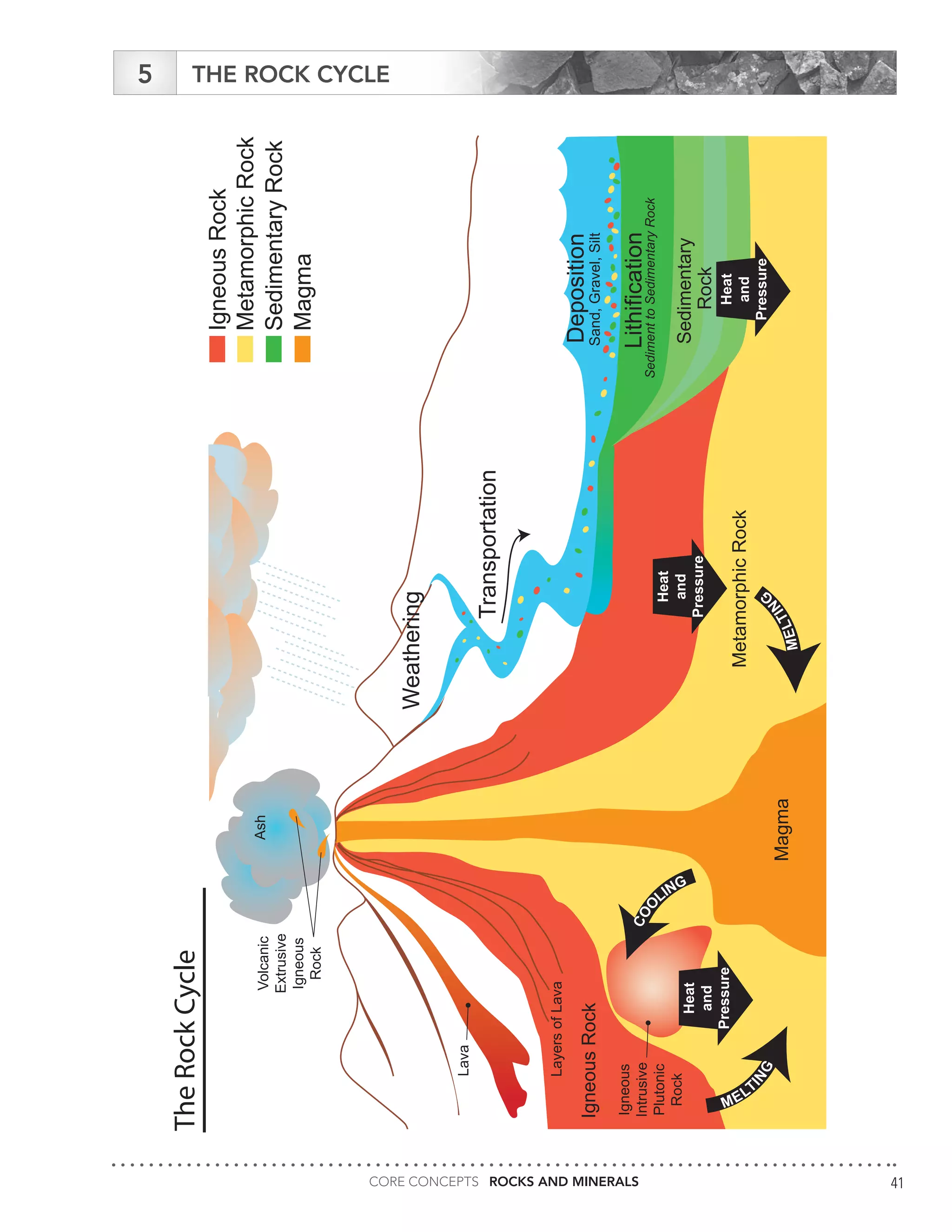The document serves as an educational guide on rocks and minerals, detailing their characteristics, classification, and identification methods through scientific tests. It includes various activities for students to engage in, focusing on physical and chemical properties of minerals while ensuring safety precautions are outlined. Additional resources and contact information for support in delivering the content are also provided.
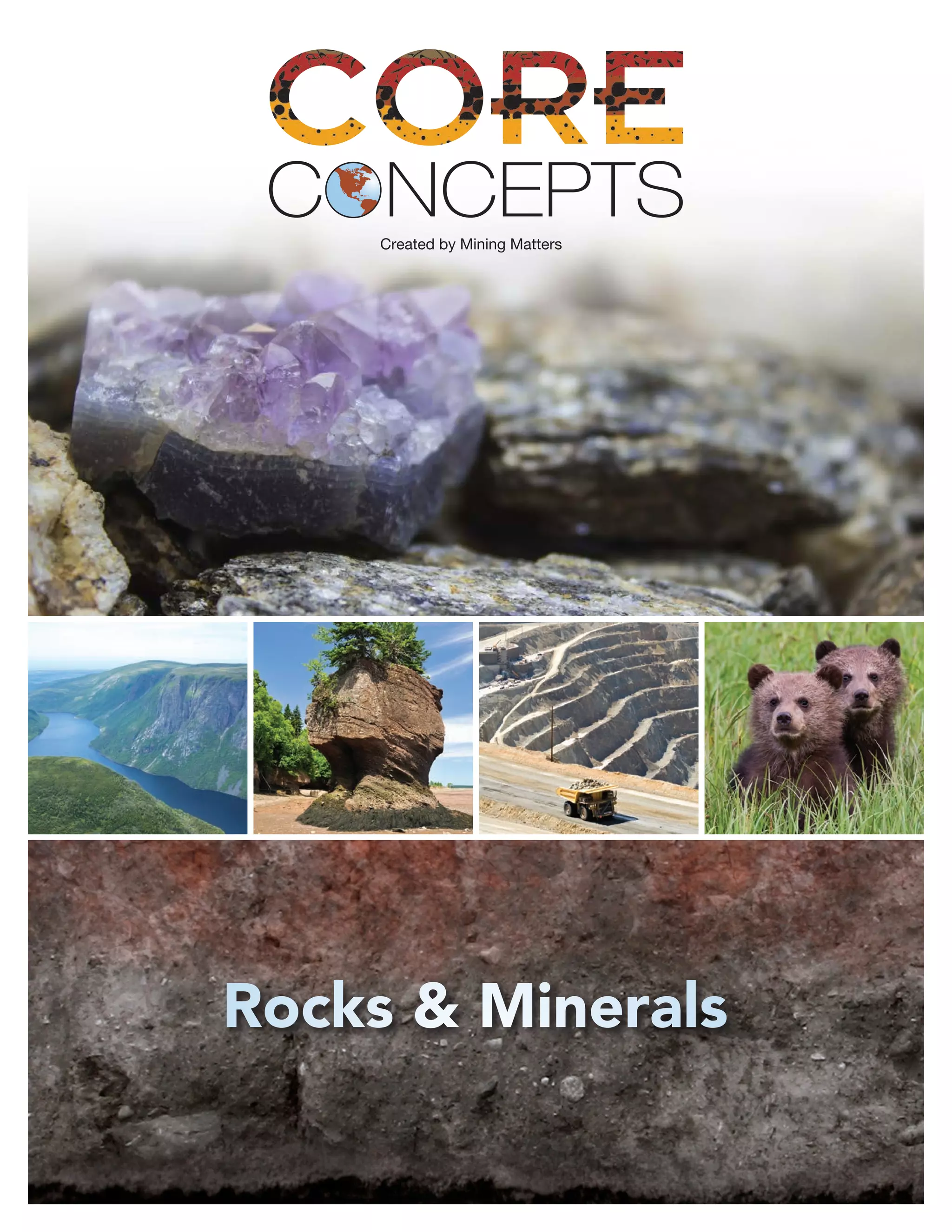

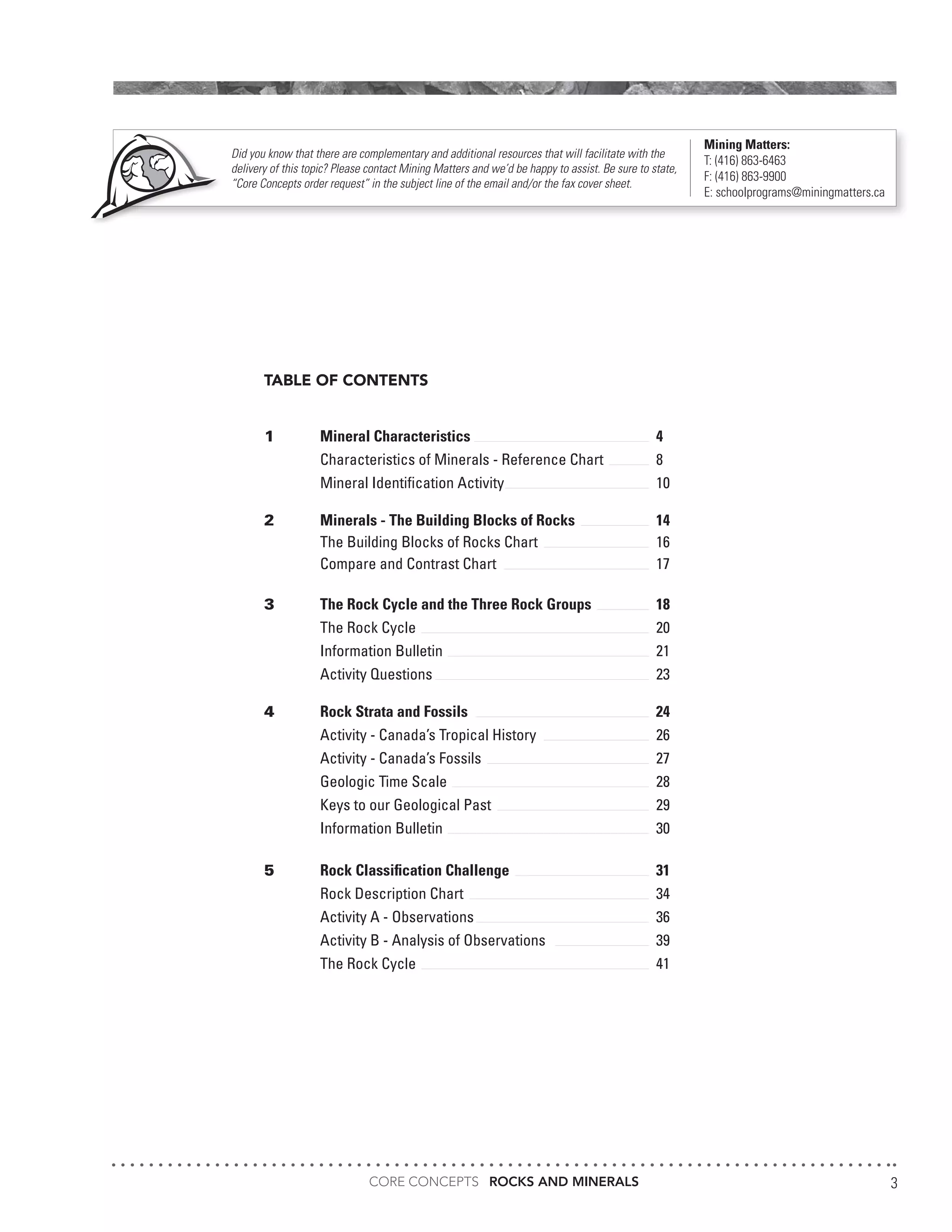

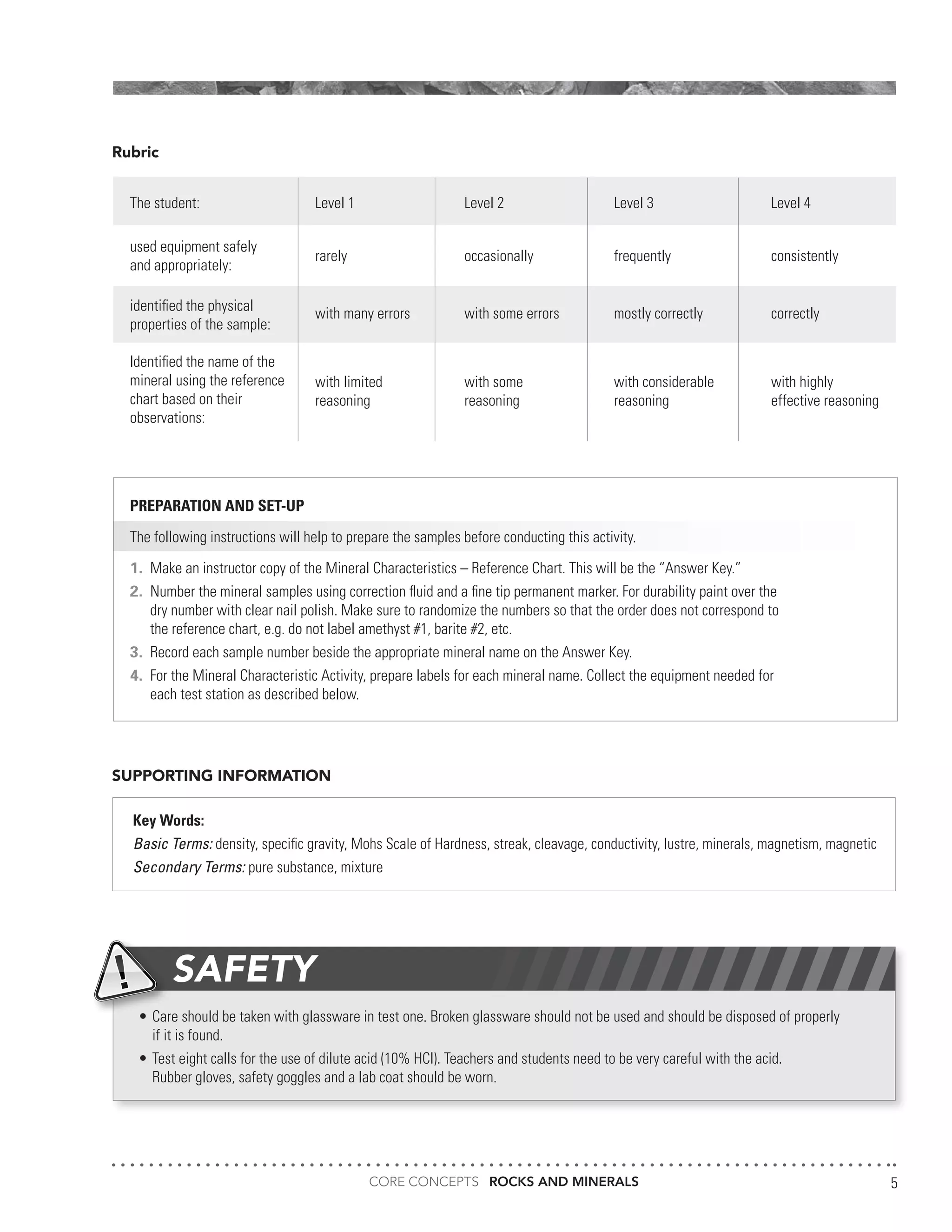
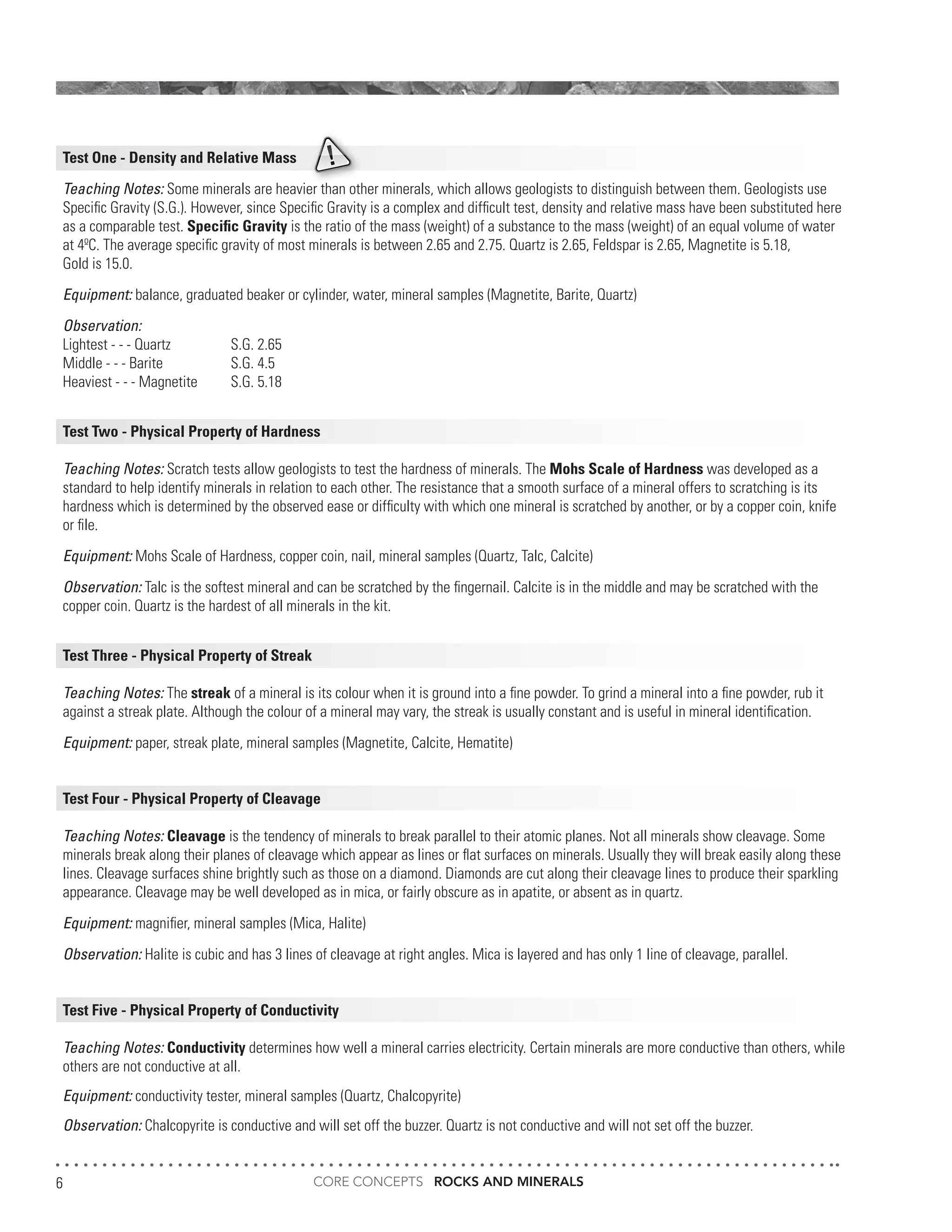
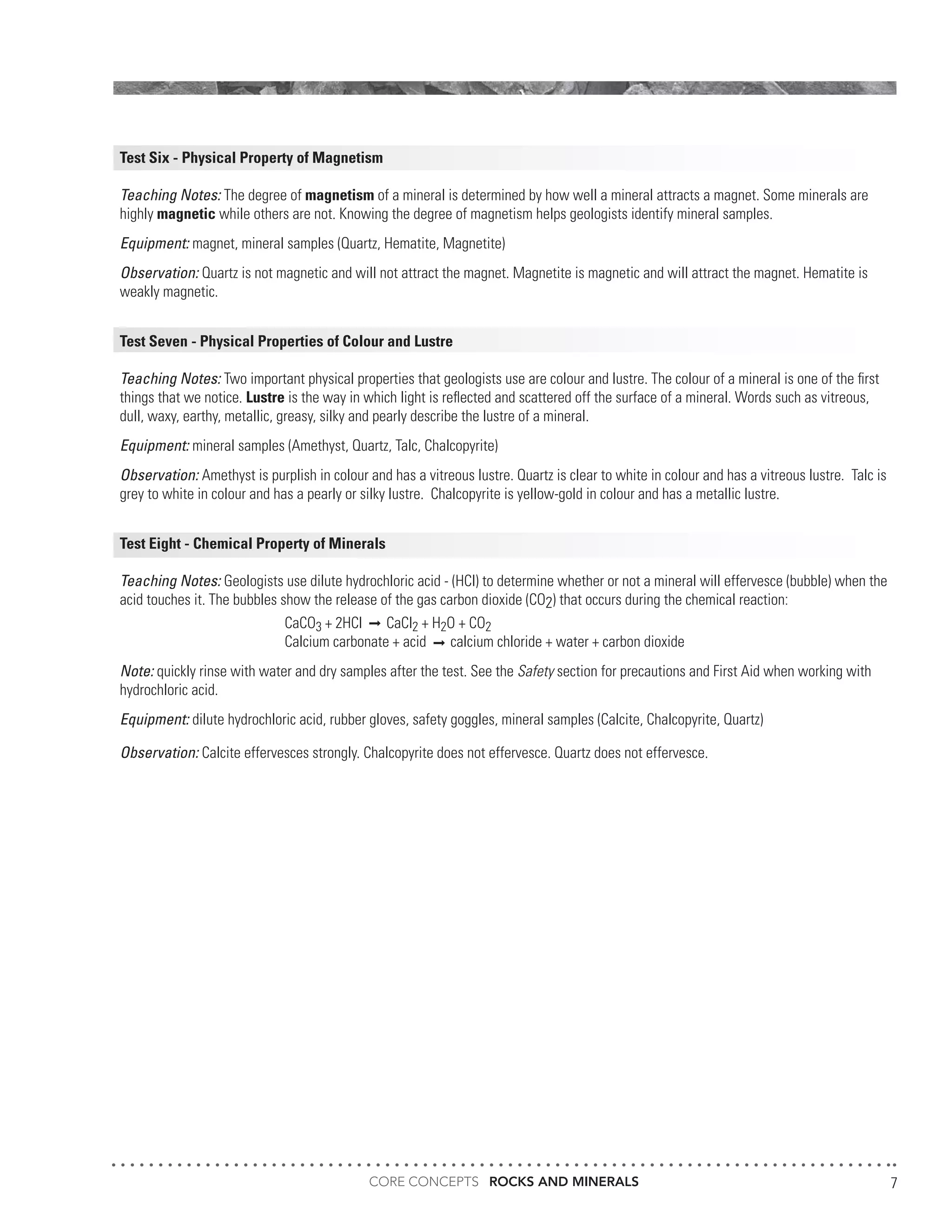
![CORE CONCEPTS ROCKS AND MINERALS8
CHARACTERISTICS OF MINERALS1
Amethyst ([Mn]SiO2)
Manganese (Mn) + Silicon (Si) + Oxygen (O)
Colour: purple
Hardness: 7
Streak: white/colourless
Lustre: vitreous (glassy)
Cleavage: none
Fracture: conchoidal
A variety of quartz
Uses: Gemstones, mineral specimens
Barite (BaSO4)
Barium (Ba) + Sulphur (S) + Oxygen (O)
Colour: white
Hardness: 3-3.5
Streak: white
Lustre: vitreous (glassy), pearly
Cleavage: perfect tabular crystals
Fracture: conchoidal
Special property: High specific gravity (very heavy)
Uses: carpets, barium ore
Calcite (CaCO3)
Calcium (Ca) + Carbon (C) + Oxygen (O)
Colour: colourless/white, orange, blue, yellow, etc.
Hardness: 3
Streak: white
Lustre: vitreous (glassy)
Cleavage: rhombohedral
Fracture: conchoidal
Uses: cements, mortars, lime production, chemical uses
Chalcopyrite (CuFeS2)
Copper (Cu) + Iron (Fe) + Sulphur (S)
Colour: brassy yellow/green
Hardness: 3.5-4
Streak: green-black
Lustre: metallic
Cleavage: rare
Fracture: conchoidal
Special property: Conductive
Uses: copper ore, electrical wires
Feldspar (KAlSi3O8)
Potassium (K) + Aluminum (Al) + Silicon (Si) + Oxygen (O)
Colour: pink
Hardness: 6
Streak: white/colourless
Lustre: vitreous (glassy)
Cleavage: 90°
Fracture: conchoidal, uneven
Uses: porcelain, mineral specimens
Halite (NaCl)
Sodium (Na) + Chlorine (Cl)
Colour: colourless/white, can be: blue, gray, red or brown
Hardness: 2
Streak: white
Lustre: vitreous (glassy)
Cleavage: cubic
Fracture: conchoidal
Special property: Tastes salty
Uses: road salt, table salt, glass, mineral specimens
Hematite (Fe2O3)
Iron (Fe) + Oxygen (O)
Colour: gray-black, red-brown
Hardness: 6-6.5
Streak: brick red
Lustre: metallic or dull
Cleavage: none
Fracture: conchoidal
Uses: iron ore, pigment, mineral specimens
Magnetite (Fe3O4)
Iron (Fe) + Oxygen (O)
Colour: black
Hardness: 5.5
Streak: black
Lustre: metallic, dull
Cleavage: imperfect cubes (rare)
Fracture: conchoidal
Special property: Magnetic
Uses: iron ore, mineral specimens](https://image.slidesharecdn.com/coreconceptsrocksminerals-161116160836/75/Core-Concepts-Rocks-Minerals-8-2048.jpg)
![CORE CONCEPTS ROCKS AND MINERALS 9
Mica (KAl3Si3O10[OH]8)
Potassium (K) + Aluminum (Al) + Silicon (Si) + Oxygen (O) + Hydrogen (H)
Colour: dark brown (biotite), colourless (muscovite)
Hardness: 2.5-3
Streak: white
Lustre: pearly, vitreous (glassy)
Cleavage: hexagonal
Fracture: laminar
Uses: industrial heat insulator, mineral specimens
Quartz (SiO2)
Silicon (Si) + Oxygen (O)
Colour: clear, white or gray
Hardness: 7
Streak: white/colourless
Lustre: vitreous (glassy)
Cleavage: none
Fracture: conchoidal
Uses: glass, electrical components, optical lenses, abrasives
Talc (Mg3Si4O10[OH]2)
Magnesium (Mg) + Silicon (Si) + Oxygen (O) + Hydrogen (H)
Colour: colourless, white, greenish, yellowish
Hardness: 1
Streak: white
Lustre: pearly, greasy
Cleavage: monoclinic
Fracture: splintery, uneven
Uses: talcum powder, counter tops, carvings, heat, acid and
electrically resistant stone (soapstone), an ingredient in paints, rubber,
roofing materials, ceramics and insecticides](https://image.slidesharecdn.com/coreconceptsrocksminerals-161116160836/75/Core-Concepts-Rocks-Minerals-9-2048.jpg)
